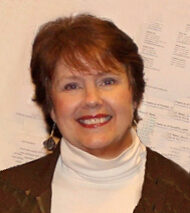
Nancy Huntting, Aesthetic Realism consultant, writes:
The answer to the question in the title of this issue—“Humor, Music, & Our Lives: What’s the Relation?”—will astound you and thrill you. For a new and invaluable way of seeing humor, music, and the world they both come from—we passionately recommend this great issue of The Right of Aesthetic Realism to Be Known!
The commentary by Ellen Reiss begins:
Dear Unknown Friends:
On October 11, 1948, Eli Siegel gave a lecture—amazing, beautiful, immensely important—titled Humor: Music. We have no recording of this early Aesthetic Realism class. But, from notes of two people present at it, I’ve had the pleasure to reconstruct a good deal of it. The notes are those of Martha Baird and my mother, Irene Reiss. We’re publishing Humor: Music in two parts: in this issue and the next.
As to the words in the title, humor and music: The way Aesthetic Realism sees each of these subjects is NEW, though in keeping with the best scholarship about both. Aesthetic Realism makes clear that music and humor are not—as people have thought them to be—offsets to our ordinary life and troubles and confusions. They’re much more than that: they explain us; they show us what the world is and how we hope to be. The basis of how they do so is in the following principle: “The world, art, and self explain each other: each is the aesthetic oneness of opposites.”
What Music Tells Us
In 1975, Mr. Siegel wrote in this journal: “Music for a long time has been telling what the world is really like.” There, in issue 93, he gives many specific examples of music as the oneness of opposites—reality’s opposites. And he writes:
There is no music without the simultaneous presence of separation and junction….The harsh and mellifluous, the rough and balmy, the sharp and soft, are made one in music….
Music (like the other arts) is this continuous statement: the makeup, the structure of the world…is also the structure of beauty itself.
What music is, what it says about reality and one’s very own self, is taught now by Barbara Allen and Edward Green in the great Opposites in Music class at the Aesthetic Realism Foundation.
I’ll give an example of Mr. Siegel’s speaking to a child about music. I was that fortunate child. Like all children and adults, I was troubled by how I could go, in a way that didn’t seem to make sense, from one kind of feeling to another. According to my mother’s notes of an Aesthetic Realism lesson when I was nearly seven, Mr. Siegel asked me, “Do you want to be like music?” “What do you mean, ‘like music’?” I asked. And he said, speaking about a song I liked:
ES. Do you think that tune goes up and down?…Do you think the notes change?
ER. Yes.
ES. I like the “St. Louis Blues” very much. The notes change but they are all about one thing. When notes do different things and they surprise you, and you think it’s natural, then you have something like music….Melody can teach you how to rise and fall and see that you are the same person.
This was a beginning for me of an education that I came to see as the most important in the world: the study of how the self of everyone is nothing less than an aesthetic situation….Read more